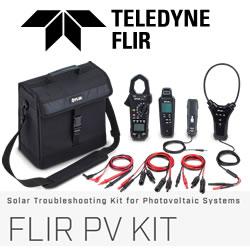A rural Iowa electric cooperative becomes a solar leader
Farmers Electric Cooperative of Kalona has become a model for simple, hands-on business programs that have made 20 percent of its members solar owners.
WASHINGTON, DC -- When you think "solar leader," a small electric cooperative in rural Iowa may not be the first thought that pops into your mind.
But the Farmers Electric Cooperative of Kalona -- at 650 members one of the smallest utilities in the United States -- has become a model for simple, hands-on business programs that have made 20 percent of its members solar owners.
Since 2008, the utility has helped put solar on local schools, launched a feed-in tariff and built a community solar garden that continues to expand in response to ever-growing customer demand. Farmers also recently powered up Iowa's largest commercial solar project, an 800-kilowatt (kW) array financed through one of the state's first power-purchase agreements.
Recognizing the role of small utilities such as Farmers in building local solar markets, the Solar Electric Power Association (SEPA) has published a case study on the co-op. Funded by the Department of Energy's Solar Outreach Partnership program, the paper is the first in a series looking at the innovative solutions co-ops and public power utilities across the country are developing to finance solar projects and integrate them into their energy mix.
SEPA also recently named Farmers' general manager, Warren McKenna, as its Utility CEO of the Year.
Key points from the case study include:
For many small utilities, solar adoption is a bottom-line issue, linked to member retention. "The technology is coming," McKenna said. "You're either going to embrace it, or a third party is going to come in and serve that load and you're going to lose that load.
Small pilot projects that feed the local economy can boost customer support and engagement. McKenna helped a local electrician get training in solar installation and then used his own work force for two 1.8-kW installations at area schools -- a practice that carried over to Farmers popular community solar project.
Feed-in tariff programs don't have to provide above-market rates to be successful. Farmers' feed-in pays solar owners for their power at existing retail rates for 10 years. "It's designed to pay back the installation," McKenna said. "We want to pull in the tax credit for our members . . . and hopefully pay them back in five to seven years."
The Farmers Electric Cooperative case study is available for free on the SEPA website, www.solarelectricpower.org.
Featured Product

FLIR PV KIT - Solar Troubleshooting Kit for Photovoltaic Systems
FLIR PV kits are designed to assess the performance, safety, and efficiency of residential, commercial, and industrial solar panels and photovoltaic systems. PV kits from FLIR help you diagnose faults and potential failures and ensure optimal energy production, system longevity, and compliance with industry standards. With a PV kit from FLIR, you'll be perfectly equipped for any solar installation or repair.
